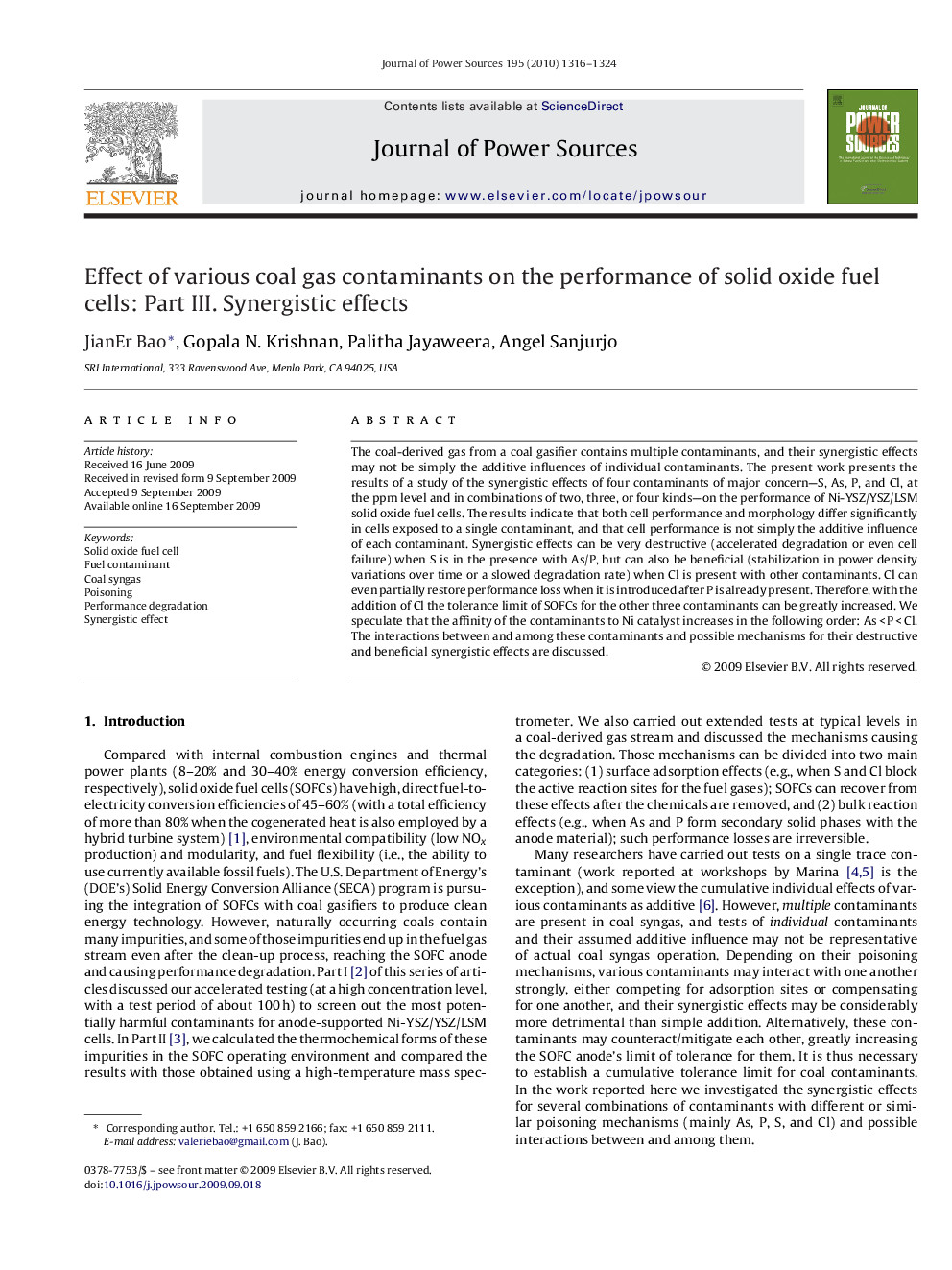| Article ID | Journal | Published Year | Pages | File Type |
|---|---|---|---|---|
| 1293808 | Journal of Power Sources | 2010 | 9 Pages |
The coal-derived gas from a coal gasifier contains multiple contaminants, and their synergistic effects may not be simply the additive influences of individual contaminants. The present work presents the results of a study of the synergistic effects of four contaminants of major concern—S, As, P, and Cl, at the ppm level and in combinations of two, three, or four kinds—on the performance of Ni-YSZ/YSZ/LSM solid oxide fuel cells. The results indicate that both cell performance and morphology differ significantly in cells exposed to a single contaminant, and that cell performance is not simply the additive influence of each contaminant. Synergistic effects can be very destructive (accelerated degradation or even cell failure) when S is in the presence with As/P, but can also be beneficial (stabilization in power density variations over time or a slowed degradation rate) when Cl is present with other contaminants. Cl can even partially restore performance loss when it is introduced after P is already present. Therefore, with the addition of Cl the tolerance limit of SOFCs for the other three contaminants can be greatly increased. We speculate that the affinity of the contaminants to Ni catalyst increases in the following order: As < P < Cl. The interactions between and among these contaminants and possible mechanisms for their destructive and beneficial synergistic effects are discussed.
